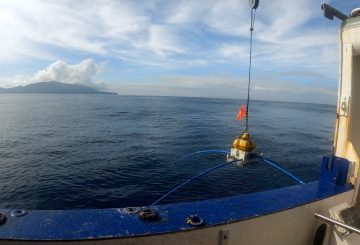Một số doanh nghiệp ở Wellington đang yêu cầu Chính phủ bắt công nhân ngừng làm việc tại nhà, theo sự dẫn dắt của Amazon. Họ tin rằng điều này có thể giúp cải thiện nền kinh tế, được mô tả là “băng giá” trong một báo cáo gần đây của Kiwibank.
Tại Wellington, gần một phần tư lực lượng lao động được tạo thành từ các công chức, với 16% khác làm việc trong chính quyền địa phương và giáo dục. Các doanh nghiệp muốn nhân viên chính phủ quay trở lại văn phòng của họ để tăng lưu lượng người đi bộ và giúp đỡ các doanh nghiệp gặp khó khăn.
Sanjay Dayal, người bán sản phẩm cho các quán ăn địa phương, cảm thấy thành phố quá yên tĩnh. Anh nhớ lại Phố Cuba từng bận rộn như thế nào và dự định chuyển cửa hàng của mình đến một khu vực bận rộn hơn. Ông chỉ ra rằng các doanh nghiệp trả tiền thuê cao hơn ở các trung tâm thành phố cho giao thông đi bộ, vốn đã giảm đáng kể do làm việc từ xa.
Dayal tin rằng nếu nhân viên chính phủ trở lại văn phòng của họ, nó sẽ hồi sinh thành phố. Ông thấy mối liên hệ giữa những con đường trống và sự suy giảm của các doanh nghiệp địa phương. Roger Young, chủ quán Fidel’s Cafe, đồng ý, lưu ý rằng nhà hàng của ông gần đây đã trải qua tuần chậm nhất trong 25 năm. Ông muốn chính phủ khuyến khích công nhân quay trở lại để nâng cao bầu không khí của thành phố.
Young nói thêm rằng trở lại văn phòng sẽ cải thiện năng suất và sức khỏe tinh thần, vì làm việc tại nhà có thể gây ra sự cô lập. Rhys Kaan, chủ sở hữu của Caffeinated Dragons, nghĩ rằng việc có nhân viên chính phủ trở lại sẽ giúp ích, nhưng ông nhận ra việc cắt giảm việc làm trong khu vực công đã gây hại cho các doanh nghiệp.
Các doanh nghiệp địa phương khác đã thích nghi bằng cách chuyển đến vùng ngoại ô, nơi nhiều người làm việc trực tiếp hơn. Mia và Tim Tracey của Pickle and Pie đã mở một tiệm bánh ở Ngaio thay vì thành phố vì khách hàng thành phố của họ thường ở nhà.
Chủ tịch Hiệp hội Nhà hàng, Mike Egan, chỉ ra rằng ít người trong văn phòng làm tổn hại đến thu nhập của doanh nghiệp. Một báo cáo gần đây lưu ý doanh số bán hàng khách sạn ở Wellington giảm 5,5% vào đầu năm 2024, trong khi doanh số bán hàng quốc gia tăng.
Trong khi có tranh luận về công việc từ xa, luật sư việc làm Susan Hornsby-Geluk nói rằng việc buộc nhân viên trở lại phụ thuộc vào hợp đồng của họ. Nếu hợp đồng quy định công việc phải được thực hiện trong văn phòng, người sử dụng lao động có thể yêu cầu trả lại. Tuy nhiên, nếu nhân viên đã làm việc tại nhà trong nhiều năm, họ có thể lập luận rằng điều này đã trở thành một thông lệ được chấp nhận.





























































